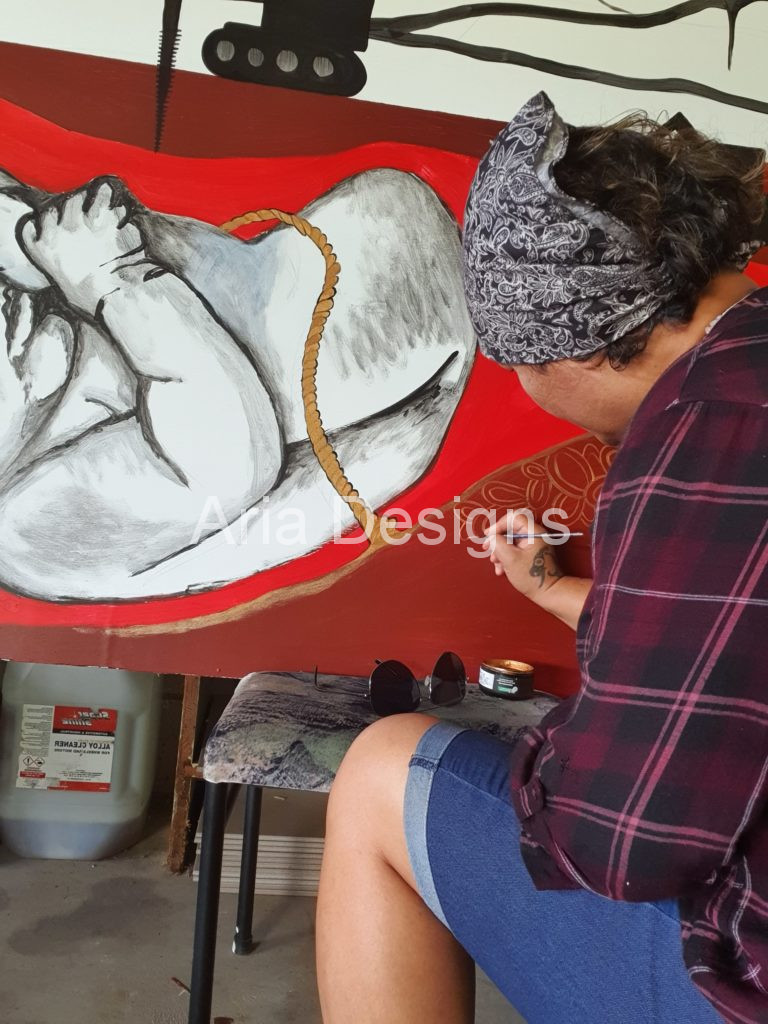Ko Whangaroa te Moana
Ko Emiemi te Maunga
Ko mutu te Awa
Te Pupuke te Kainga
Ko Tahaawai te Hapu
Ngati Kahu ki Whangaroa te iwi
No te whanau Toetoe o Pupuke
He uri au o Hongi Hika
Ko Yazma Smith toku ingoa
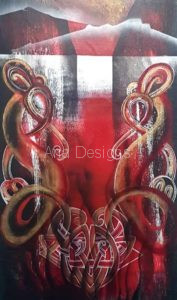
My Ngati Kahu ki Whangaroa whakapapa comes from my father,
My Ngati Hine whakapapa from my mother,
These Iwi sit within the northern Wharenui (big house) of Nga Puhi.
My Pakeha ancestry is of Celtic extraction – however, it is my whakapapa as Tangata whenua, that binds me to this time, place and space.
Born in 1974 and raised in South Auckland, Mangere – my raw talent for visual arts was identified at an early age.
My professional training began in the Mangere College Art Department at age 13, with Max White – my mentor and lifelong friend.
He encouraged me to look to the toi mahi of my tupuna for artistic influence, insisting my Maoritanga is what made me original and unique to the world.
From here my passion for Toi Nga Puhi was ignited, a source of artistic awe and wonder to empower my cultural identity and energise my creative soul.
In 1994 with Max White’s mentoring, I was accepted to Elam, School of Fine Art at the University of Auckland. Completing two years of study at Te Toi Hou, at the Maori Arts department – the first of its kind. Here I had the privilege of being mentored by acclaimed Maori visual artists, Kura Te Waru Rewiri, and the late Selwyn Muru.
By my third year, I began to long for life experience that university academia could not provide, and the desire for a change of pace from my concrete, urban environment.
In 1997 I left the lecture theatres of Elam for the mountain corridors of Te Wai Pounamu o Maui, the South Island. The plan, a working holiday in the orchards of Nelson at Tapawera, Mapua and Motueka.
The country life style and relaxed pace appealed to me greatly, and the 6 month long apple season, soon turned into 4 years. These were some of the happiest days of my life and in 1999 gave birth to my son, then in 2000 my daughter.
With the new responsibilities of motherhood, I decided it was time to pickup my professional development, returning to Mangere in 2001. With the support of my whanau, in 2002 I enrolled at the Manukau Institute of Technology in Otara, South Auckland, to complete a Bachelors of Visual Arts..
Over this 3-year period, I thrived creatively with so much visual content and cultural context to draw inspiration from, producing some of my most powerful and informative artworks. Lifelong connections where also formed with fellow artists of the Pacific Ocean, Moana nui a Kiwa.
In 2004 with the support of my whanau, I graduated with a BVA and in 2005 collaborated with a colleague from MIT to open a Gallery, that focused on Maori/Pacific Contemporary Visual Arts called Fresh gallery, Otara Town Centre.
The manifestation of Fresh Gallery was a symbol of the decolonisation of our image. A creative mainstream space that challenged Western Fine art traditions and asserted ‘indigenous art’ as a living force of NZ art history, not a passing fad.
Now managed by the Auckland City council, Fresh Gallery continues to hold space for emerging and established Pacifica artists of Manukau – the largest Polynesian city in the world.
In 2006, with the encouragement of my father, I made the decision to return to my ancestral homeland at Pupuke, Whangaroa.
This was the year my grandmother was diagnosed with Alzheimer’s, signalling the end of her reign as Ahi Kaa of our whanau whenua, while offering the bittersweet opportunity for me to fill this role.
With a young family in tow, I put the pressures and expectations of my urban existence behind us, packed up and left for Pupuke to keep the fire burning.
The city offers many things and for some the pursuit of material wealth was a path to debt, addiction, dis-ease and poverty.
With the ‘sign of the times’ in mind, going home was a ‘no brainer’ and meant letting go of social constructions, toxic relationships, outmoded beliefs and values that no longer served me.
A time of immense transformation.
In 2010 my Grandmother passed away surrounded by her whanau. We lay her to rest at Waitaruke, at the head waters of Whangaroa.
Everyday we honour her memory and legacy by living and thriving on the whenua she held for us, her mokopuna.
Giving her name to my second daughter, Raiha born in 2011 and raised at Pupuke.
Those early years on the whenua were very lonely. I missed my artist friends terribly and loneliness became my new friend. But my hunger for knowledge about my cultural identity that I sensed all around me, became my muse and constant companion.
In 2008 to 20I3, I found a source of purpose and connection at Te Huia Marae in the form of weekend Wananga and Marae Noho run by Hou Kainga. Kaupapa included Te Reo, Raranga, Whakapapa, Waiata, Karanga, Kapa Haka, Tikanga, Maramataka and Matauranga Maori.
The connection to moana (sea), whanaunga (relatives), whakapapa (geneology) and tupuna (ancestors) became a rich source of spiritual enlightenment, and creative inspiration that my concrete jungle could not provide.
In 2014 I gained employment at Whangaroa College as a teacher aid. Then in 2015 – 2016 as a Visual Arts teacher – a profession I aspired to.
I was excited to be contributing to the creative development of our Rangatahi and was able to spear head a number of community projects while in this role.

In 2017 I gained employment at The Papa Hapu o Whangaroa, a local historical research and archival unit that supported claimant evidence for the Treaty settlements.
My function to analyse and strengthen claimant Briefs of Evidence (BOE) in preparation for stage two of the Treaty Settlement process.
This mahi gave me a very personal perspective of our colonial history and the maemae (greivances) impacting Whangaroa tangata whenua. I learnt how 200 years of toi mahi and visual art history was erased through Christianity, leaving our Marae unadorned, barren and sterile.
The restoration of mahi toi became my main focus, purpose and drive.
This mural, a collaboration with a local artist and akonga from the Whangaroa College Art Department, an example of this restoration reviving pu rakau also on the verge of erasure from our collective consciousness.
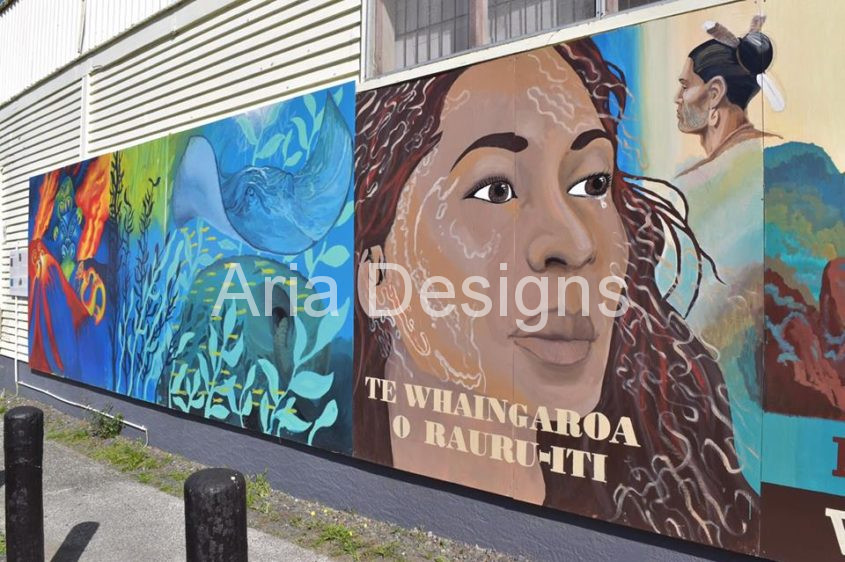
In 2018, with experience gained from my time at Whangaroa College, I decided to expand my own professional practice – and Aria Designs was born.
Through local connections I learnt how to build this website, a digital space to document my creative process and record the development of community projects.
From this the Toi Mauri art classes grew, supported by parents with Rangatahi who possess artistic abilities, running since 2018 to present day.
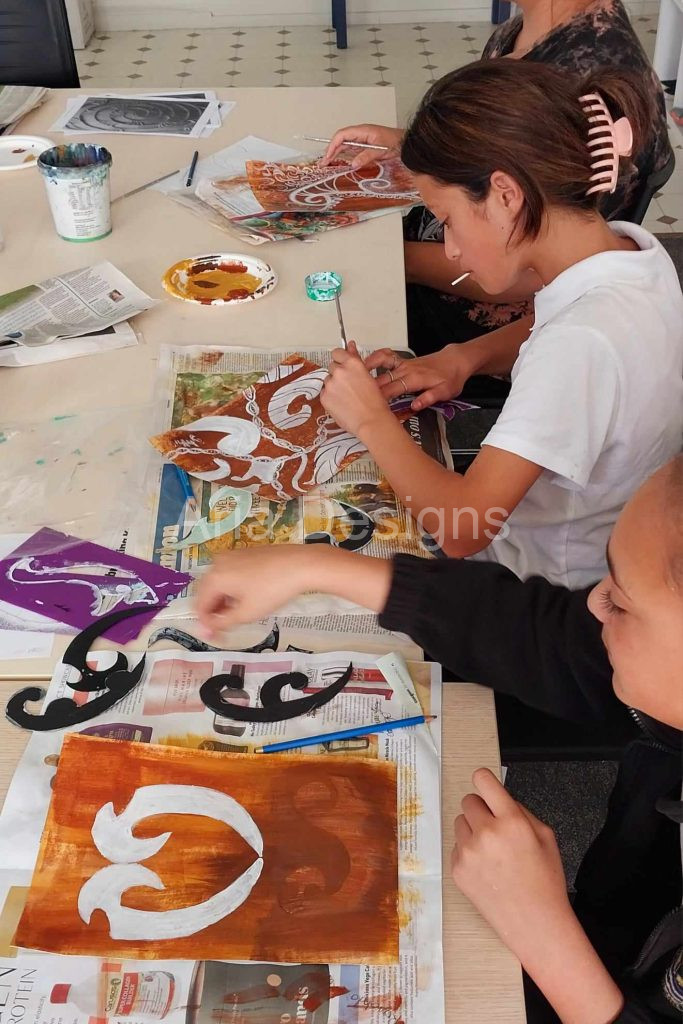
In 2020 I gained a Diploma in Adult Teaching from Te Wananga O Aotearoa with the intent to expand my skill base. During my studies, my artistic skills and experience were noticed by my tutor and was offered a role teaching their Maori Visual Arts programme.
Unfortunately due to the covid pandemic and the vaccination mandates that followed, the entire Te Wananga O Aotearoa campus in Kaikohe was closed down.
During this time of dis-ease and uncertainty, I kept painting, evolving, producing, manafesting, visualising….
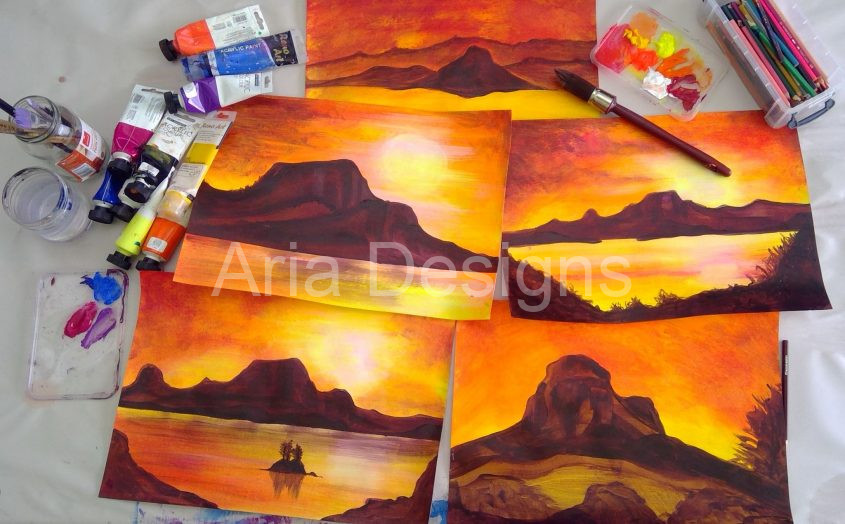
In 2021 I began writing restorative Maori Visual Art programmes and a script for a short film about my ancestral Maunga in collaboration with my daughter – an ako of Maori Media with funding from Creative communities.
In 2023 I began delivering the Toi Ora kaupapa for adults providing artistic services to the Mate wareware, Dementia/alziemers support group here in Whangaroa. I also intend on facilitating these restorative workshops at Marae and our local community, in response to overwhelming interest and support.
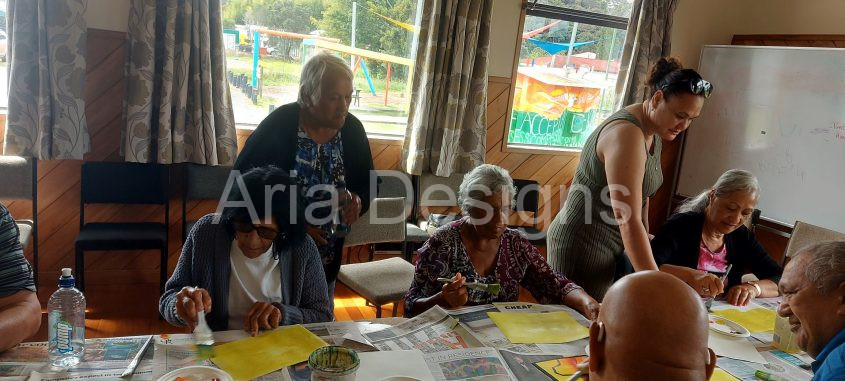
Alongside my daughter, we have been facilitating Hapu restoration wananga with our Ngati Hine whanau of Matawaia, my mothers people. This collective of cousins, nieces and nephews empowers and informs me creatively. I am excited with the potential that this space may bring.
I invite you to browse this site to gain insight into my creative process and the visual expressions it produces.
Rendered mostly in paint, but not restricted to it, you’ll find examples of printmaking, resin pours, film, woodwork and photography.
All lovingly crafted from my own two hands, as well as collaboratively.
These expressions of genetic memory that honor my whakapapa and energise my wairua.
Nau mai haere mai,
I hope you enjoy the experience,
Nga mihi
Yazma Smith
